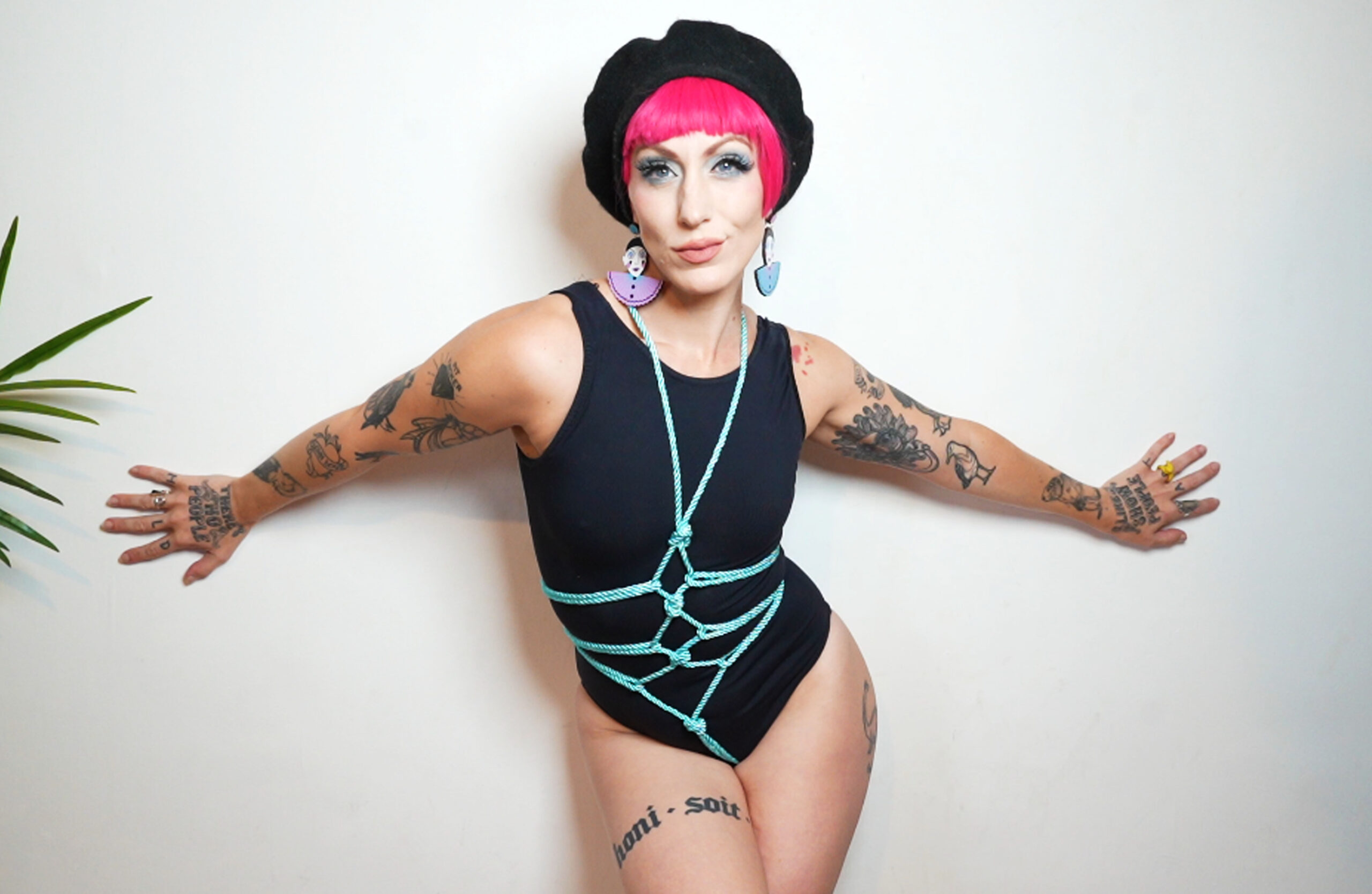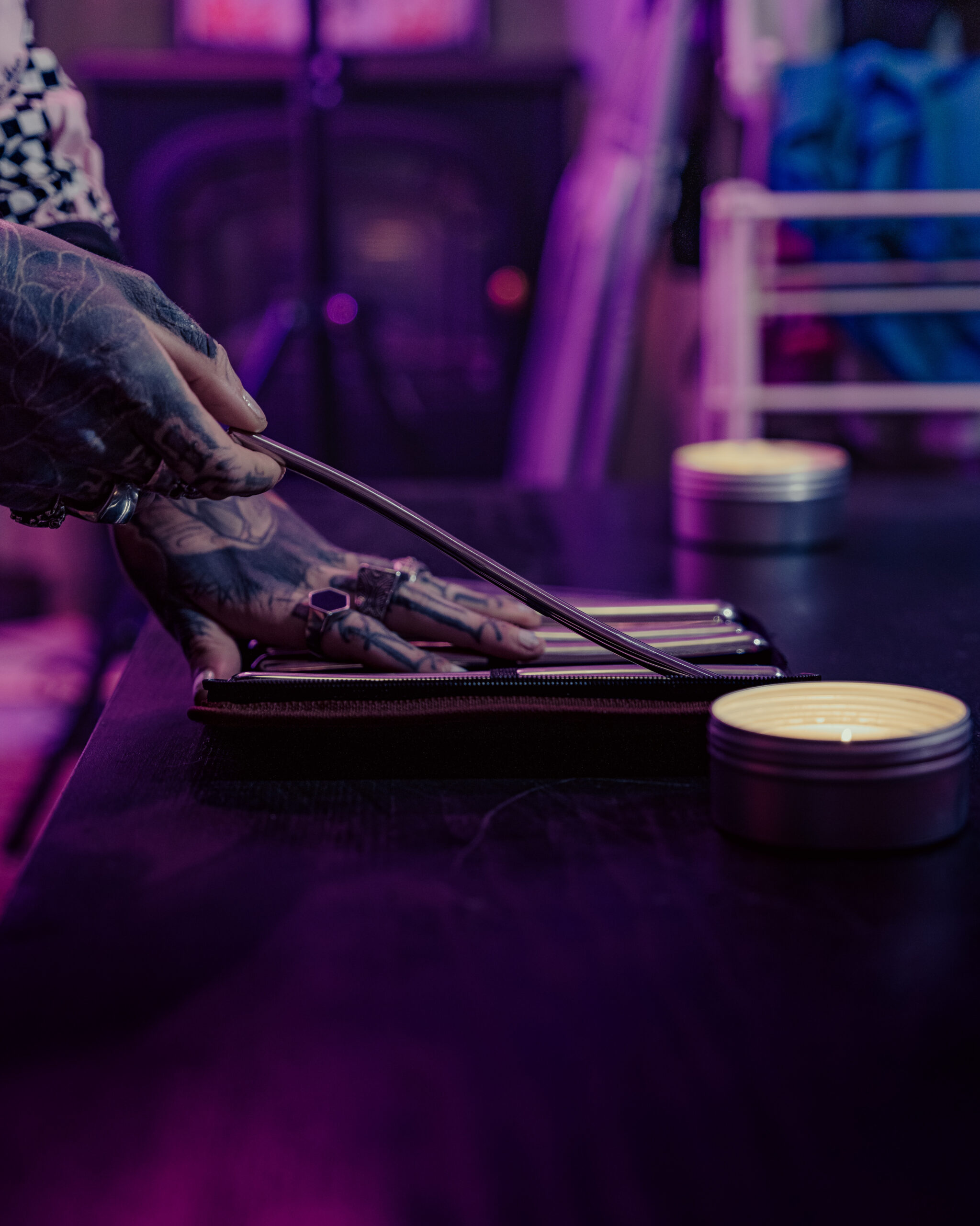Historical Roots
Pansexuality, an orientation defined by attraction to people regardless of gender identity or expression, has deep historical roots that challenge prevailing societal norms. Tracing its origins through time reveals a fascinating journey of evolving understanding, activism, and the ongoing struggle for acceptance.
Ancient Greece and Roman Empire
While pansexuality as a term gained prominence in the 20th century, expressions of attraction across gender boundaries have existed throughout history. Ancient Greece, often celebrated for its openness to diverse relationships, exemplified this concept through practices like pederasty, where older men formed close bonds with younger boys, regardless of their sexual orientation.
The Roman Empire also displayed a spectrum of sexuality, acknowledging same-sex relationships and fluid gender roles. However, societal norms and legal structures often enforced heteronormativity, leading to persecution and marginalization of individuals who deviated from the established order.
Early Modern Period and the Emergence of “Pan”
During the Early Modern Period (roughly 15th to 18th centuries), European society became increasingly rigid in its adherence to strict gender roles and binary classifications. Concepts like “homosexuality” began to emerge as distinct categories, often pathologized within medical discourse. Despite this tightening of social norms, evidence suggests that practices and expressions of attraction beyond the heterosexual norm persisted in various forms, albeit hidden from public view.

The emergence of “pan” as a descriptor of sexual orientation gained traction in the late 20th century, reflecting a growing recognition of fluidity and diversity in human experience. This shift coincided with broader social movements challenging traditional gender norms and advocating for LGBTQ+ rights.
The Rise of Modern Pansexuality
Pansexuality, an orientation defined by attraction to people regardless of gender identity or expression, has deep historical roots that challenge prevailing societal norms. Tracing its origins through time reveals a fascinating journey of evolving understanding, activism, and the ongoing struggle for acceptance.
Late 20th Century Activism and Identity Formation
While pansexuality as a term gained prominence in the 20th century, expressions of attraction across gender boundaries have existed throughout history. Ancient Greece, often celebrated for its openness to diverse relationships, exemplified this concept through practices like pederasty, where older men formed close bonds with younger boys, regardless of their sexual orientation.
The Roman Empire also displayed a spectrum of sexuality, acknowledging same-sex relationships and fluid gender roles. However, societal norms and legal structures often enforced heteronormativity, leading to persecution and marginalization of individuals who deviated from the established order.
During the Early Modern Period (roughly 15th to 18th centuries), European society became increasingly rigid in its adherence to strict gender roles and binary classifications. Concepts like “homosexuality” began to emerge as distinct categories, often pathologized within medical discourse. Despite this tightening of social norms, evidence suggests that practices and expressions of attraction beyond the heterosexual norm persisted in various forms, albeit hidden from public view.
The emergence of “pan” as a descriptor of sexual orientation gained traction in the late 20th century, reflecting a growing recognition of fluidity and diversity in human experience. This shift coincided with broader social movements challenging traditional gender norms and advocating for LGBTQ+ rights.
Intersectionality and Evolution of Definitions
The concept of pansexuality as we understand it today has evolved significantly over time, intertwined with shifting societal norms and evolving understandings of gender and sexuality. While the term itself gained prominence in the late 20th century, expressions of attraction across gender boundaries have existed throughout history.
Historical accounts reveal instances of same-sex relationships and fluid gender roles in ancient societies like Greece and Rome. However, these were often embedded within complex social structures and power dynamics. The rise of rigid binary classifications during the Early Modern Period led to the pathologization of non-heteronormative expressions of sexuality.
The latter part of the 20th century witnessed a resurgence of activism and a push for greater visibility and acceptance of diverse sexual orientations. The term “pansexual” emerged as a way to encompass attraction to individuals regardless of their gender identity or expression, reflecting a growing recognition of the fluidity and spectrum of human experience.
Contemporary understandings of pansexuality are further shaped by intersectionality, acknowledging that identities like race, class, and disability intersect with sexual orientation. This framework recognizes the unique experiences and challenges faced by individuals within overlapping social categories.
Challenges to Societal Norms
The concept of pansexuality as we understand it today has evolved significantly over time, intertwined with shifting societal norms and evolving understandings of gender and sexuality. While the term itself gained prominence in the late 20th century, expressions of attraction across gender boundaries have existed throughout history.
Historical accounts reveal instances of same-sex relationships and fluid gender roles in ancient societies like Greece and Rome. However, these were often embedded within complex social structures and power dynamics. The rise of rigid binary classifications during the Early Modern Period led to the pathologization of non-heteronormative expressions of sexuality.
The latter part of the 20th century witnessed a resurgence of activism and a push for greater visibility and acceptance of diverse sexual orientations. The term “pansexual” emerged as a way to encompass attraction to individuals regardless of their gender identity or expression, reflecting a growing recognition of the fluidity and spectrum of human experience.
Contemporary understandings of pansexuality are further shaped by intersectionality, acknowledging that identities like race, class, and disability intersect with sexual orientation. This framework recognizes the unique experiences and challenges faced by individuals within overlapping social categories.
Challenging Binary Gender Constructs
The concept of pansexuality as we understand it today has evolved significantly over time, intertwined with shifting societal norms and evolving understandings of gender and sexuality. While the term itself gained prominence in the late 20th century, expressions of attraction across gender boundaries have existed throughout history.
Historical accounts reveal instances of same-sex relationships and fluid gender roles in ancient societies like Greece and Rome. However, these were often embedded within complex social structures and power dynamics. The rise of rigid binary classifications during the Early Modern Period led to the pathologization of non-heteronormative expressions of sexuality.
The latter part of the 20th century witnessed a resurgence of activism and a push for greater visibility and acceptance of diverse sexual orientations. The term “pansexual” emerged as a way to encompass attraction to individuals regardless of their gender identity or expression, reflecting a growing recognition of the fluidity and spectrum of human experience.

Contemporary understandings of pansexuality are further shaped by intersectionality, acknowledging that identities like race, class, and disability intersect with sexual orientation. This framework recognizes the unique experiences and challenges faced by individuals within overlapping social categories.
Redefining Relationships and Attraction Beyond Labels
The concept of pansexuality as we understand it today has evolved significantly over time, intertwined with shifting societal norms and evolving understandings of gender and sexuality. While the term itself gained prominence in the late 20th century, expressions of attraction across gender boundaries have existed throughout history.
Historical accounts reveal instances of same-sex relationships and fluid gender roles in ancient societies like Greece and Rome. However, these were often embedded within complex social structures and power dynamics. The rise of rigid binary classifications during the Early Modern Period led to the pathologization of non-heteronormative expressions of sexuality.
The latter part of the 20th century witnessed a resurgence of activism and a push for greater visibility and acceptance of diverse sexual orientations. The term “pansexual” emerged as a way to encompass attraction to individuals regardless of their gender identity or expression, reflecting a growing recognition of the fluidity and spectrum of human experience.
Contemporary understandings of pansexuality are further shaped by intersectionality, acknowledging that identities like race, class, and disability intersect with sexual orientation. This framework recognizes the unique experiences and challenges faced by individuals within overlapping social categories.
Challenges to societal norms posed by pansexuality male sex dolls stem from its inherent rejection of binary categorizations based on gender.
- Redefining relationships: Pansexuality broadens the scope of potential romantic and sexual connections, moving beyond the limitations imposed by rigid gender norms. This challenges traditional notions of partnership and encourages individuals to explore relationships with diverse partners.
- Redefining attraction: The concept of attraction extending beyond binary labels disrupts the societal assumption that individuals are inherently attracted to a specific gender. This opens up possibilities for connection and intimacy based on genuine compatibility and personal preference, rather than societal expectations.
Combatting Stigma and Misconceptions
The concept of pansexuality as we understand it today has evolved significantly over time, intertwined with shifting societal norms and evolving understandings of gender and sexuality. While the term itself gained prominence in the late 20th century, expressions of attraction across gender boundaries have existed throughout history.
Historical accounts reveal instances of same-sex relationships and fluid gender roles in ancient societies like Greece and Rome. However, these were often embedded within complex social structures and power dynamics. The rise of rigid binary classifications during the Early Modern Period led to the pathologization of non-heteronormative expressions of sexuality.
The latter part of the 20th century witnessed a resurgence of activism and a push for greater visibility and acceptance of diverse sexual orientations. The term “pansexual” emerged as a way to encompass attraction to individuals regardless of their gender identity or expression, reflecting a growing recognition of the fluidity and spectrum of human experience.
Contemporary understandings of pansexuality are further shaped by intersectionality, acknowledging that identities like race, class, and disability intersect with sexual orientation. This framework recognizes the unique experiences and challenges faced by individuals within overlapping social categories.
Challenges to societal norms posed by pansexuality stem from its inherent rejection of binary categorizations based on gender.
- Redefining relationships: Pansexuality broadens the scope of potential romantic and sexual connections, moving beyond the limitations imposed by rigid gender norms. This challenges traditional notions of partnership and encourages individuals to explore relationships with diverse partners.
- Redefining attraction: The concept of attraction extending beyond binary labels disrupts the societal assumption that individuals are inherently attracted to a specific gender. This opens up possibilities for connection and intimacy based on genuine compatibility and personal preference, rather than societal expectations.
Combatting stigma and misconceptions surrounding pansexuality requires a multifaceted approach involving education, advocacy, and fostering inclusivity. Open dialogue and honest conversations about sexuality can help dismantle harmful stereotypes and promote understanding.
Representation of pansexual individuals in media, literature, and popular culture is crucial for normalizing diverse experiences and challenging societal perceptions. Visibility can empower individuals to embrace their identities openly and authentically.
Future Directions
The concept of pansexuality as we understand it today has evolved significantly over time, intertwined with shifting societal norms and evolving understandings of gender and sexuality. While the term itself gained prominence in the late 20th century, expressions of attraction across gender boundaries have existed throughout history.
Historical accounts reveal instances of same-sex relationships and fluid gender roles in ancient societies like Greece and Rome. However, these were often embedded within complex social structures and power dynamics. The rise of rigid binary classifications during the Early Modern Period led to the pathologization of non-heteronormative expressions of sexuality.
The latter part of the 20th century witnessed a resurgence of activism and a push for greater visibility and acceptance of diverse sexual orientations. The term “pansexual” emerged as a way to encompass attraction to individuals regardless of their gender identity or expression, reflecting a growing recognition of the fluidity and spectrum of human experience.
Contemporary understandings of pansexuality are further shaped by intersectionality, acknowledging that identities like race, class, and disability intersect with sexual orientation. This framework recognizes the unique experiences and challenges faced by individuals within overlapping social categories.
Challenges to societal norms posed by pansexuality stem from its inherent rejection of binary categorizations based on gender.
- Redefining relationships: Pansexuality broadens the scope of potential romantic and sexual connections, moving beyond the limitations imposed by rigid gender norms. This challenges traditional notions of partnership and encourages individuals to explore relationships with diverse partners.
- Redefining attraction: The concept of attraction extending beyond binary labels disrupts the societal assumption that individuals are inherently attracted to a specific gender. This opens up possibilities for connection and intimacy based on genuine compatibility and personal preference, rather than societal expectations.
Looking ahead, the future of pansexuality is likely to be shaped by ongoing efforts to challenge societal norms and advocate for greater inclusivity. As understanding of gender identity and expression continues to evolve, so too will our conceptions of sexuality and attraction. Further research and open dialogue are essential to dismantling stigma and creating a more equitable society that embraces the full spectrum of human experience.
Evolving Language and Terminology
The evolution of language surrounding pansexuality reflects a broader societal shift towards greater acceptance and understanding of diverse gender identities and expressions. As our understanding of gender continues to evolve, so too will the language we use to describe sexual orientation.
Here are some potential future directions for evolving language:
* **Increased Specificity:** We might see a rise in more nuanced language that distinguishes between various aspects of attraction, such as romantic interest, sexual desire, and emotional connection, allowing individuals to express their experiences with greater precision.
* **Embracing Inclusivity:** Language will likely continue to evolve to be more inclusive of all gender identities and expressions, ensuring that it accurately reflects the diverse experiences of individuals within the pansexual community.
* **Decentering Gender:** Language might shift further away from centering gender as a primary determinant of attraction, focusing instead on individual connection and compatibility. This could involve exploring new terms or frameworks that emphasize shared values, interests, or personal qualities over rigid gender categories.
The evolution of language surrounding pansexuality is a reflection of the ongoing progress in creating a more inclusive and equitable society.
Inclusivity and Representation in Media and Culture
The concept of pansexuality as we understand it today has evolved significantly over time, intertwined with shifting societal norms and evolving understandings of gender and sexuality. While the term itself gained prominence in the late 20th century, expressions of attraction across gender boundaries have existed throughout history.
Historical accounts reveal instances of same-sex relationships and fluid gender roles in ancient societies like Greece and Rome. However, these were often embedded within complex social structures and power dynamics. The rise of rigid binary classifications during the Early Modern Period led to the pathologization of non-heteronormative expressions of sexuality.
The latter part of the 20th century witnessed a resurgence of activism and a push for greater visibility and acceptance of diverse sexual orientations. The term “pansexual” emerged as a way to encompass attraction to individuals regardless of their gender identity or expression, reflecting a growing recognition of the fluidity and spectrum of human experience.
Contemporary understandings of pansexuality are further shaped by intersectionality, acknowledging that identities like race, class, and disability intersect with sexual orientation. This framework recognizes the unique experiences and challenges faced by individuals within overlapping social categories.
Challenges to societal norms posed by pansexuality stem from its inherent rejection of binary categorizations based on gender.
- Redefining relationships: Pansexuality broadens the scope of potential romantic and sexual connections, moving beyond the limitations imposed by rigid gender norms. This challenges traditional notions of partnership and encourages individuals to explore relationships with diverse partners.
- Redefining attraction: The concept of attraction extending beyond binary labels disrupts the societal assumption that individuals are inherently attracted to a specific gender. This opens up possibilities for connection and intimacy based on genuine compatibility and personal preference, rather than societal expectations.
Looking ahead, the future of pansexuality is likely to be shaped by ongoing efforts to challenge societal norms and advocate for greater inclusivity. As understanding of gender identity and expression continues to evolve, so too will our conceptions of sexuality and attraction. Further research and open dialogue are essential to dismantling stigma and creating a more equitable society that embraces the full spectrum of human experience.
The evolution of pansexuality’s language reflects a broader societal shift toward embracing diversity in gender identity and expression. As our understanding evolves, so will the terms we use to describe attraction and relationships.
Here are some potential future directions for evolving language:
* **Increased Specificity:** We might see more nuanced terms that differentiate aspects like romantic interest, sexual desire, and emotional connection. This allows individuals to express their experiences more precisely.
* **Prioritizing Inclusivity:** Language will likely become even more inclusive of all gender identities and expressions, accurately reflecting the diversity within the pansexual community.
* **Decentering Gender:** There might be a shift away from centering gender as the primary factor in attraction. This could involve exploring new terms or frameworks that emphasize shared values, interests, or personal qualities over rigid gender categories.
The evolution of language surrounding pansexuality demonstrates progress toward a more inclusive and equitable society where everyone feels seen and accepted for who they are.
Continued Advocacy and Social Change
My Mental Health Rocks
Pastel Palette Candle
- Sensual Attraction And The Desire For Non-Sexual Touch - June 1, 2025
- Profhilo Treatment Near Send, Surrey - June 1, 2025
- Lip Fillers Explained: A Beginner’s Guide For UK Residents - May 31, 2025
